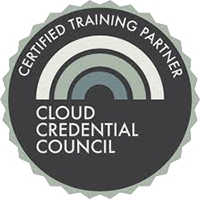ITSM Provides A Framework for Success
Information Technology Service Management (ITSM) is a strategic approach involved with designing, delivering, managing, and enhancing the way that Information Technology (IT) is used and leveraged within an organization. A large component of ITSM is the assurance that the right people, technology, processes, and best practices are being used throughout the organization. Through a well-executed ITSM process, the latter entities can be enhanced to help the organization best meet its business goals. The value of implementing an ITSM program can also be seen in the organization’s enhanced ability to leverage the best processes for consistently and efficiently meeting deliverables. Without a solid ITSM program, your organization’s future could be left to blind fate. However, with the proper implementation and the right guiding tools, ITSM processes can provide the standards, best practice frameworks, and specialized tool sets needed to help organizations achieve key priorities in multiple business sectors.
What best practices should be leveraged to assist in alignment and increased value of service to end users?
IT solutions are often directly tied to revenue streams. One way to understand the importance of a solid ITSM process is to think of service management as the tool set needed to increase revenue. The better the IT service management, the fewer the occurrences of costly downtime, and the increased ability to achieve higher revenue. Another way to think of it, is that IT service management helps organizations establish Service Level Agreements (SLAs). If you haven’t properly defined an SLA, then the end user or client will assign a value that might not be achievable with the resources or tools that the organization has available. A well designed ITSM process can help to identify appropriate SLAs, which can change the cost profile and allow organizations to more effectively measure deliverables and establish benchmarks. Without an ITSM process, SLAs become guesswork and the organization’s revenue might suffer as a direct result.
An ITSM program or process is only as good as the standardized guidelines that it follows. As an example, if every organization “makes-up” its own best practice guidelines for ITSM, then inter-company collaboration and the use of Commercial Off The Shelf (COTS) IT solutions quickly become impossible to successfully implement and manage. After all, the management of the aforementioned software or IT solutions requires a set of guidelines that must be adhered to, if the product is to work properly. Ignoring these guidelines in favor of an organization’s adopted ITSM process can easily lead to chaos.
To combat chaos in IT, organizations need to embrace best practice frameworks and methodologies that are designed to streamline, enhance, and create a uniformed ITSM process across organizations. In this vein, small, medium, and large enterprises have begun to adopt ITIL, COBIT, and ISO 20000 processes to better align their internal ITSM processes with these established frameworks, methodologies, and guiding principles.
- ITIL – The Information Technology Infrastructure Library (ITIL) is a best practice framework that can be applied to private and federal sectors. It is used to teach IT administrators how to organize IT resources to deliver enhanced business value, document processes, and record the functions and roles of ITSM. In addition to published resources, ITIL has an extensive series of comprehensive qualifications, accredited training organizations, and assessment tools that can be used to establish an environment of IT best practices and continuous learning within organizations.
- COBIT – COBIT is an established IT governance framework, as well as supporting tool set, that helps IT directors navigate the gaps between control requirements, business risks, and technical issues. COBIT establishes an environment of clear policy development. It helps to facilitate control throughout IT lifecycles and it emphasizes regulatory compliance, so that organizations can improve the value that is received from their chosen IT solutions. Additional benefits include: proper IT alignment with business goals and objectives, simplified implementation of IT governance, and a controlled framework for future IT implementation and management efforts.
- ISO 20000 – The ISO/IEC 20000 certification is a standardized ITSM assessment. It is important to note that this certification is known as “the international IT standard.” During the qualification, application, and auditing process organizations will have to demonstrate an excellence in IT management and prove that only the best IT management practices are used throughout the entire organizational structure. Achieving an ISO 20000 certification is no small task. It involves an intricate process of measurements, improvements, clarifications, and achievements. The audit process is designed to measure and assess and organization’s ITSM solution. Evidence-based benchmarks must be achieved and an environment of continuous improvement must be established for the delivery of IT services.
When used properly, the aforementioned guides can save money, introduce much-needed IT structure, and create efficiencies that contribute to the on-time delivery of high-quality organizational deliverables, as well as the meeting of key milestones. In addition, ITIL, COBIT, and ISO 20000 can help organizations define roles and responsibilities, establish metrics for benchmarking, create environments of continual improvement, and introduce a higher level of accountability within IT investment. In short, a successful ITSM process cannot exist without the guiding principles of the aforementioned entities; together, they can help organizations achieve key priorities, complete boardroom objectives, and meet business milestones across multiple initiatives.





